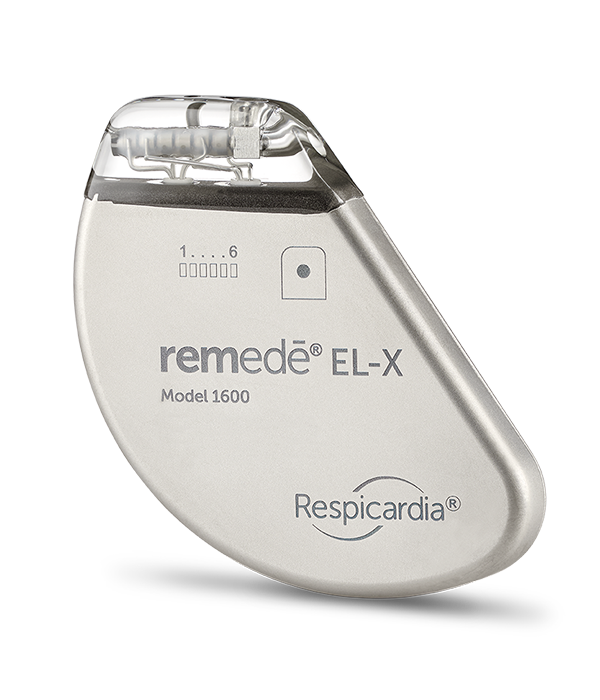
In search of better sleep?
Discover remedē®
If restless nights are disrupting your days, it may be time to consider the remedē System—the first and only FDA-approved non-mask therapy designed to treat moderate to severe central sleep apnea (CSA) in adults.


Breathe easier, sleep easier—treat CSA without masks or meds

remedē is an implantable device that activates automatically and restores a more normal breathing pattern so that you can treat your CSA without a mask or medications.
remedē is designed to help you rest easy, sleep peacefully—and have more energy for what you love.
Because better days start with better nights.
How remedē works
Normally when a person sleeps, the brain automatically signals the phrenic nerves to contract the diaphragm, pulling air into the lungs.
For people with CSA, the brain does not properly signal the phrenic nerves, which causes inadequate breathing that disrupts sleep.
The remedē System stimulates the phrenic nerve so that the brain doesn’t have to. remedē turns on automatically and works continuously to monitor and stabilize breathing—restoring a more restful sleep.
Learn about CSA and the remedē System
Clinically proven to improve sleep, breathing & quality of life
95% of patient reported they would “elect to have the medical procedure again”1
78% of patients reported quality of life improvement using the Patient Global Assessment1
96% reduction in the median Central Apnea Index at 1 year2
Improvements in sleep
disordered breathing
and quality sustained
out to 5 years2
90% of patients experienced freedom from serious adverse events associated with implant procedure, the remedē System, or delivered therapy at 12 months. 86% experienced freedom from associated serious adverse events through five years.2
Commonly Asked Questions
How do I know if the remedē® System therapy is right for me?
The remedē System is approved for adult patients with moderate to severe central sleep apnea. Your doctor will need to determine the type and severity of sleep apnea based on your sleep study. If your doctor determines that you have central sleep apnea you should discuss with your physician if the remedē System is right for you. The remedē System reduces the number of sleep apnea events and improves sleep quality, as well as improves daytime sleepiness and quality of life as assessed by patients.2
What is involved with the procedure?
The remedē System is an implantable, battery-powered device placed under the skin in the upper chest area. Implantation is typically an outpatient procedure performed under light sedation, meaning that patients usually stay awake but are drowsy during the procedure. You may stay in hospital overnight, depending on your health, how well you tolerate the procedure and how fast you recover. Please consult with your doctor for additional information.
What are the risks?
As with any surgically implanted device, there are risks related to the implant procedure which may include, but are not limited to, pain, swelling and infection. Once the remedē System is implanted and the therapy is turned on, some patients may experience discomfort from stimulation and/or from the presence of the device. The majority of these events are resolved on their own or by adjusting the therapy settings. The remedē System may not work for everyone.
There are additional risks associated with removing the system. If you and your doctor decide to remove the system, another surgery will be required.
Be sure to talk with your doctor so that you thoroughly understand all of the risks and benefits associated with the implantation of the remedē System.
What happens after the procedure?
About 1 month after your procedure, therapy will be started. Over the first 3 months of therapy, you will work with your doctor to ensure that the therapy is calibrated for your individual needs. Once the therapy is adjusted for you, you will need check-up visits every 3-6 months. In the first few months after the therapy begins, you may be aware of the movements of your diaphragm at night. This shows that the therapy is active. Most patients adjust to the therapy within the first 3 months.
Who is contraindicated for the remedē System?
The remedē System should not be placed if an active infection is present.
Is the remedē System approved for Magnetic Resonance Imaging (MRI)?
The remedē System has received MR conditional approval in the United States only. It is retro-compatible with previously implanted remedē devices. For more information, please visit the MRI Resources section.

